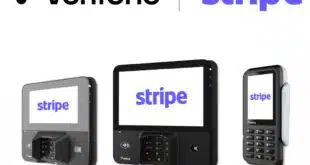An analysis of recent credit and debit card transaction data by credit-union services organization The Members Group gives some interesting insights about the penetration of two new payment channels in the U.S.—EMV chip cards and mobile payments.
For example, EMV transactions amounted to 26% of all transactions that TMG processed over the busy shopping weekend stretching from Black Friday (Nov. 27) to Cyber Monday (Nov. 30), according to the Des Moines, Iowa-based payment processor for more than 250 credit unions. Overall, TMG’s EMV card transactions were up 60% in November over October’s volume, Chole Casber, product manager at TMG, tells Digital Transactions News.
The payment card networks’ EMV liability shifts for the point-of-sale took effect Oct. 1, marking the official start of the EMV era in the U.S.
Another EMV factoid: Holders of TMG-processed chip credit cards spent an average of $74.20 per transaction versus $71.67 for holders of mag-stripe credit cards. While notable, Casber doubts the 3.5% difference is statistically significant. It may have resulted from higher-ticket and higher-volume merchants currently being more ready than most others to accept chip cards.
“It looks like an anomaly right now … I don’t think it’s probably going to last,” he says.
Despite the frenzied chip card usage over the post-Thanksgiving weekend, EMV transactions currently account for only about 3% of all TMG transactions. Volume, however, has been increasing by more than 30% per month since January, according to TMG. Current EMV volume is just slightly below the 4% for Visa Inc.’s card issuers overall, based on dollar volume that Digital Transactions News estimated using figures Visa released for October.
Slightly more than 27% of all credit and debit cards issued by TMG clients have chips, which Casber says “is fantastic.” That amount is a bit ahead of the 25% EMV penetration for Visa’s U.S. card base.
Casber adds that in contrast to most issuers who initially are offering contact-only EMV cards, 70% of TMG clients’ cards are of the dual-interface variety that supports both contact and contactless transactions. Issuers are choosing dual-interface so that their cards become top-of-wallet choices for cardholders, despite the approximately $1 higher cost per card, he says.
“It’s pretty reasonable for what you’re getting,” says Casber. “It’s another payment method within the same form factor.”
Still another factoid: The greatest majority of TMG-served cardholders transacting with EMV chip credit cards were in their 50s and 60s, making up 40% of the total cardholder population using their cards in the Black Friday-Cyber Monday period. “It’s probably something we’ll continue to see—an older demographic utilizing a plastic form factor rather than a mobile form factor,” says Casber.
In addition to its early look at EMV patterns, TMG also examined tokenized transactions over the same weekend. Most of those were generated by customers of client financial institutions who used iPhones to pay via Apple Inc.’s Apple Pay service.
While overall mobile volume was small—TMG didn’t release transaction figures—58% of transactions were debit, with the rest credit. The average tokenized debit transaction was $25.80 compared with the $45.53 average for tokenized credit transactions.
Of the cardholders who made at least one tokenized transaction over the holiday weekend, the largest segment, 31%, was composed of consumers in their 30s, TMG says. Account holders ages 18 to 29 and ages 40 to 49 made up the next largest groups at about 24% each.





